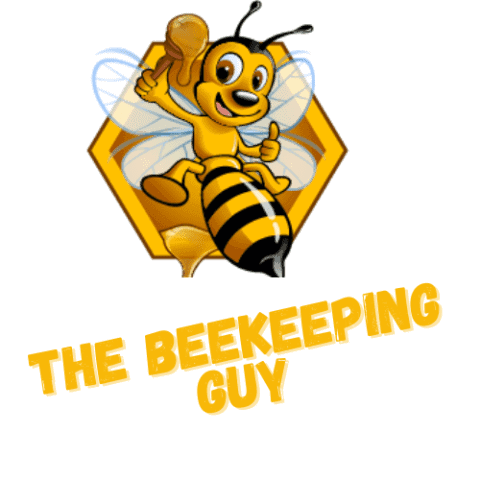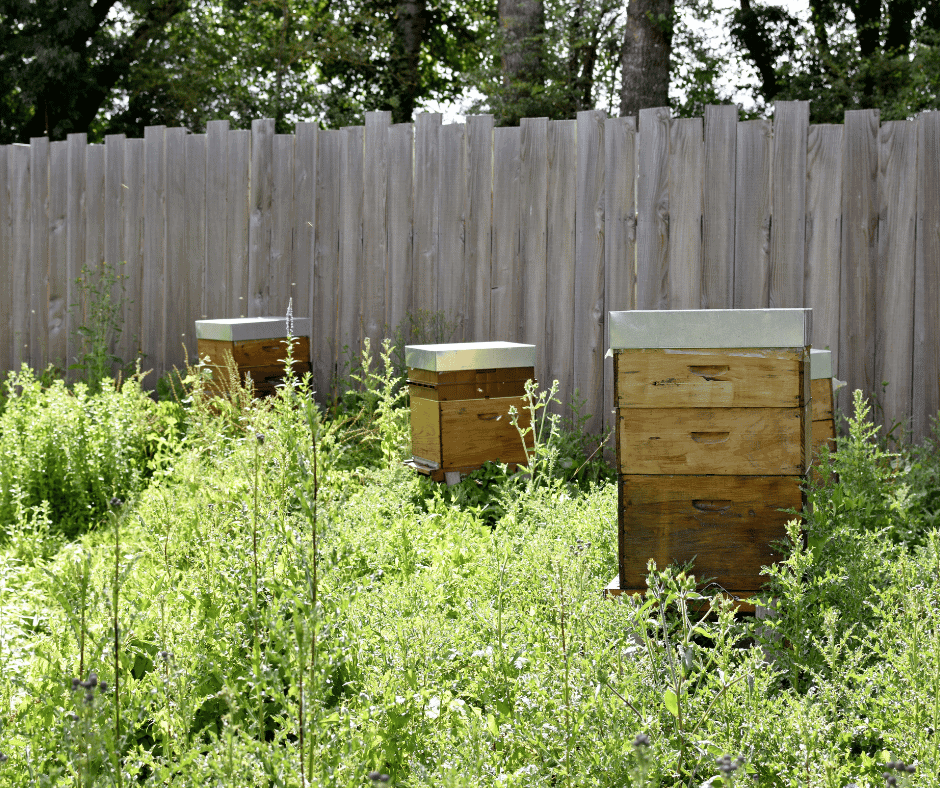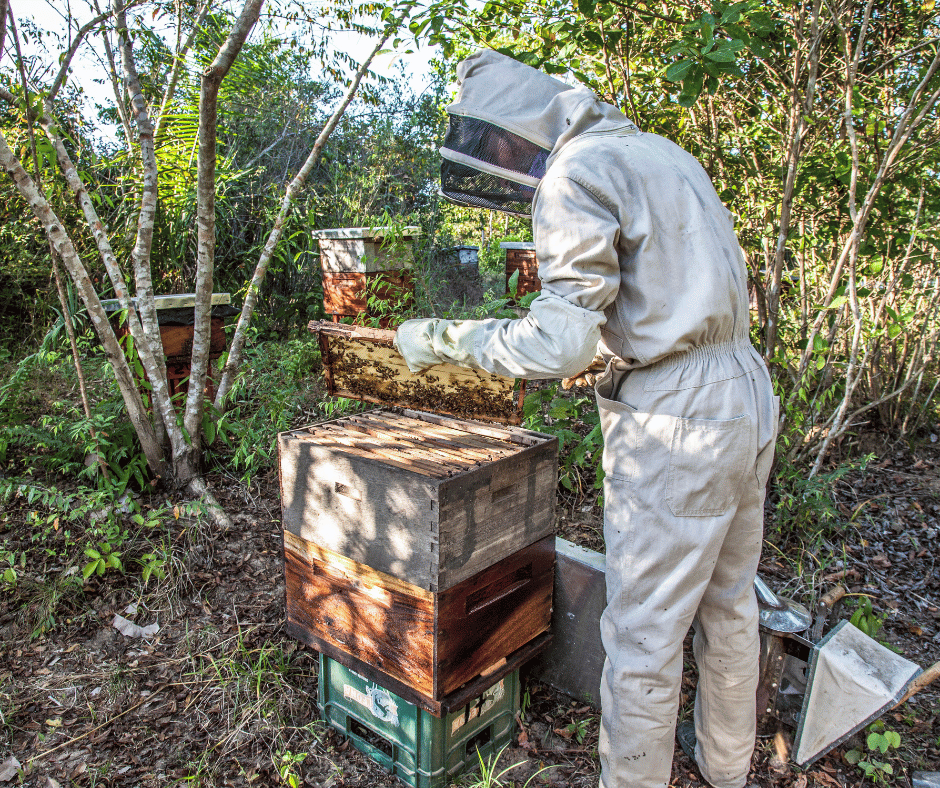
Honey bees are an essential part of our natural environment, and their unique behaviors have been studied for centuries. But one behavior that is often overlooked is the act of vomiting, or “puking”. So is honey bee puke?
In this blog article, we will be uncovering the mysteries behind honey bee puke and exploring its role in nature. We’ll also look at how human interactions can impact honey bees’ vomiting habits as well as examine the unique chemistry behind it.
Finally, we’ll explore both the benefits and risks associated with consuming honey bee vomit. So if you’re curious to learn more about these fascinating insects and their mysterious behavior – read on!
Table of Contents
The Honeybees Digestive System

Honey bee puke, also known as honey stomach contents or honey crop regurgitation, is a fascinating phenomenon that has been studied by scientists for centuries. Honey bees have a specialized digestive system that allows them to store nectar and pollen in their “honey stomach” before they bring it back to the hive.
When they return home with the food, they will often regurgitate some of this stored material into the mouths of other bees in order to share it with their colony mates.
This process is essential for maintaining healthy colonies since it allows all members of the hive access to important nutrients and energy sources such as carbohydrates and proteins found in nectar and pollen.
It also helps spread beneficial bacteria throughout the colony which can help protect against disease-causing organisms like fungi or viruses.
This substance contains enzymes that break down complex sugars found in nectar into simpler forms that are easier for other bees to digest. It also contains antimicrobial compounds which help protect against harmful microorganisms present within the hive environment while providing additional nutrition benefits through its high concentration of amino acids, vitamins, minerals, and trace elements
Beekeepers have long used honey crop regurgitation as an effective way to feed young larvae during times when there may not be enough natural resources available outside of the hive due to its ability to provide essential nutrients quickly without having any negative effects on development rates compared with feeding them directly from flowers or artificial supplements like sugar syrup solutions.
Additionally, research suggests that consuming small amounts regularly may even increase longevity among adult workers!
In conclusion, understanding how honeybees use trophallaxis can provide valuable insight into how we might better manage our own hives while helping us appreciate these amazing creatures even more than we already do!
Uncovering the Mysteries of Honey Bee Vomit

Honey bees are fascinating creatures that have been around for millions of years, and their behavior has long captivated scientists. One of the most intriguing aspects of honey bee biology is the mysterious substance known as “bee vomit,” or more technically, regurgitated nectar.
This sticky liquid is produced by worker bees when they return to the hive after collecting nectar from flowers. But what exactly is this strange substance?
Bee vomit contains a mixture of enzymes and sugars that help break down complex carbohydrates into simpler forms that can be digested by other members of the colony. It also serves as an important source of energy for young larvae in need of nourishment during their development stages.
The composition and concentration levels vary depending on factors such as flower type, environmental conditions, and even individual bee species; however, it typically consists mostly of water with small amounts of sugar (glucose) and proteins (amino acids).
The process behind how workers produce this unique secretion remains largely unknown; however, researchers believe it involves a combination of chemical reactions within their digestive system along with specialized glands located near their mouthparts which secrete saliva-like fluids.
These contain containing enzymes to further break down food particles before being expelled outwards in liquid form through special openings called “nectar pores” found on each side abdomen area near the thorax region.
Uncovering all mysteries surrounding honey bee puke will not only provide us valuable insight into these amazing insects but could potentially lead new discoveries related to medical treatments or even agricultural practices!
What is the Role of Honey Bee Puke in Nature?
Honeybee puke, or honeybee regurgitation, is an essential part of the natural cycle. It plays a key role in pollination and helps to ensure that plants are able to reproduce. Honey bee puke is produced when bees consume nectar from flowers and then return to their hive where they regurgitate it into wax cells for storage.
This process creates a concentrated form of sugar-rich liquid known as honey which can be used by humans for food or medicinal purposes.
The act of pollination occurs when the bees collect pollen from one flower and transfer it onto another flower while collecting nectar along the way. Pollen contains genetic material that allows plants to reproduce, so this process is vital for maintaining biodiversity in nature.
In addition to its role in pollination, honeybee regurgitation also serves other purposes such as providing nutrition for young larvae within the hive and helping with temperature regulation inside the colony during winter months when food sources may be scarce outside.
The sticky substance also acts like glue holding together pieces of comb built by worker bees within their hives – without it, these structures would collapse!
Overall, honey bee puke has many uses both inside and outside its own species – making them an integral part of our planet’s ecosystem!
Exploring the Benefits and Risks of Consuming Honey Bee Puke

Honey bee puke, or honey stomach contents, is a unique and interesting food source that has been gaining traction in recent years. While it may sound unappetizing at first glance, many people are discovering the potential health benefits of consuming this unusual substance. But what exactly is honey bee puke and how does it affect our bodies?
Honey bee puke is essentially regurgitated nectar from bees that have fed on flowers. It contains enzymes that help to break down the sugars found in nectar into simple forms like fructose and glucose for easier digestion by humans.
This process also creates an array of beneficial compounds such as probiotics, vitamins, minerals, antioxidants, and amino acids – all of which can be beneficial for our overall health when consumed regularly.
Additionally, some studies suggest that regular consumption may help reduce inflammation throughout the body while also aiding digestion thanks to its prebiotic content which helps promote healthy gut bacteria growth.
However, there are some risks associated with consuming too much honeybee vomit including digestive upset due to overconsumption or allergic reactions if you’re sensitive to certain components within the product itself (such as pollen).
Therefore it’s important not only to understand your own individual needs but also to consult a healthcare professional before adding any new foods into your diet – especially ones like this!
Examining How Human Interactions Impact Honey Bees’ Vomiting Habits

Recent studies have been examining how human interactions impact honey bees’ vomiting habits. Honey bee puke, or regurgitation, is an important part of their digestive process and can be used to create a variety of products such as honey.
It has long been known that the presence of humans can cause stress in honey bees which could potentially affect their ability to vomit properly.
Researchers have found that when humans are present during the collection process, it causes increased levels of stress hormones in the bees leading them to vomit less than they would normally do without human interaction.
This means that if we want our bee populations to remain healthy and productive we need to take measures so as not to disturb them while collecting their precious product.
The study also showed that when there was no human interaction during collection, the amount of regurgitated material was significantly higher than with a person present – suggesting that even just being near a hive can cause enough disruption for it negatively affects production levels.
This research highlights how important it is for us all – from farmers and producers through consumers -to understand how our actions may be impacting these vital pollinators’ behavior and health outcomes; something which should always be taken into consideration when dealing with any species living in close proximity with us humans!
Investigating the Unique Chemistry Behind Honey Bee Vomit

Honeybees are fascinating creatures, and their unique chemistry is something that has been studied for centuries. One of the most interesting aspects of honey bee biology is their ability to vomit up a sweet liquid known as “honey bee puke”. This substance has some remarkable properties which have made it an important part of many industries.
In order to understand the chemistry behind this phenomenon, scientists have conducted extensive research into its composition and structure. It turns out that honey bee puke contains several different compounds, including proteins, carbohydrates, lipids, and minerals.
These components work together in complex ways to create a thick syrup-like substance with a distinct flavor profile.
The proteins found in honey bee puke act as emulsifiers which help keep the mixture from separating into its individual components while also providing nutrition for the bees themselves.
The carbohydrate content helps provide energy for flight while also serving as a food source for other organisms such as fungi or bacteria living inside hives or on flowers visited by bees during pollination activities.
Finally, minerals like calcium carbonate give it its characteristic sweetness and can even be used in baking applications due to their stabilizing effects on doughs and batters!
Overall, investigating the unique chemistry behind honeybee vomit provides us with valuable insights into how these amazing insects function within our ecosystems – not only do they produce delicious treats but they’re essential pollinators too!



